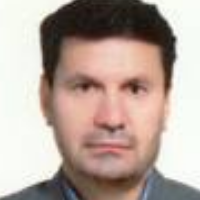The Mediating role of Marital Burnout in the Structural Relationship between Mental-toughness and Wellness
The aim of this study was to determine the structural pattern wellness based on mental toughness by marital burnout in married students in a correlational design.
The statistical population of the research was made up of all the students of Islamic Azad University of Central Tehran branch in the academic year of 2019-2019, and 517 people were selected using the available method. The research tools included Wellness Inventory (Myers and Sweeney, 1987), Psychological Capitla Questionnaires (Luthans and Avolio, 2007), the Mental Toughness Questionnaire (Clough et al., 2002) and Burn out Measure (Pines, 1996). Young's schema therapy protocol (1999) was implemented during 8 sessions on the subjects of the experimental group.
The results showed that the wellness model based on mental toughness with emphasis on the mediating role of marital burn out fits and marital burn out has a mediating role in the relationship between mental toughness with marital burnout of married students. Based on the results of modeling, mental toughness is able to explain 54% of the variance of marital burnout of married students..
It seems that in order to increase the wellness level of students, based on positive psychology and personality traits such as mental toughness, as well as strengthening the proper understanding of married students' marital relationships, effective measures can be taken to strengthen wellness. It improved the quality of life of married students, families, and consequently the entire community, which is essential given the conditions imposed by the pandemic of Corona virus desaesis-19.
-
Identification of factors influencing domestic violence against Iranian women with Afghan immigrant spouses
Sima Mortazavi, *, Hossein Eskandari, Ahmad Borjali, Mahdi Khanjani
Journal of Psychological Sciences, -
Existential distress in palliative care of cancer patients at the end of life: a systematic review
Hossein Eskandari, , Adeleh Rezagholizadeh Shirvan, Mohammad Asgari, Neda Shahvaroughi Farahani*
Tehran University Medical Journal,


